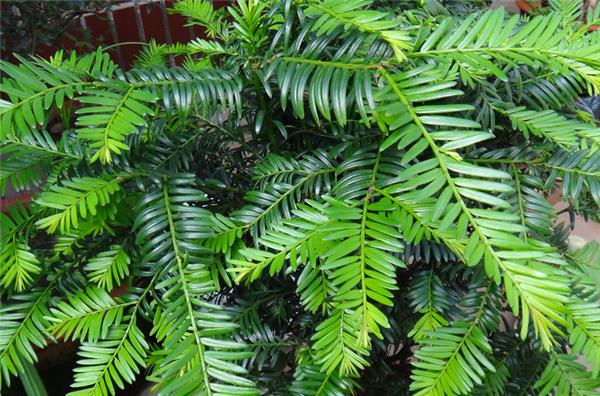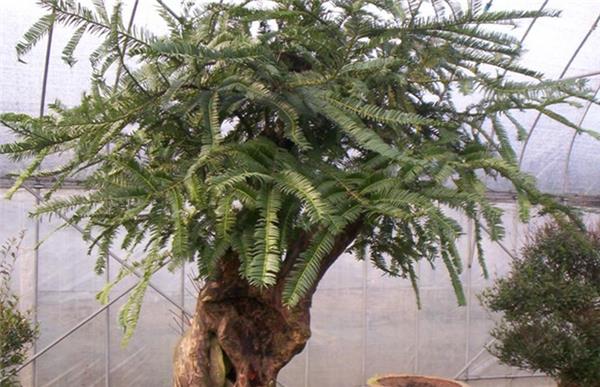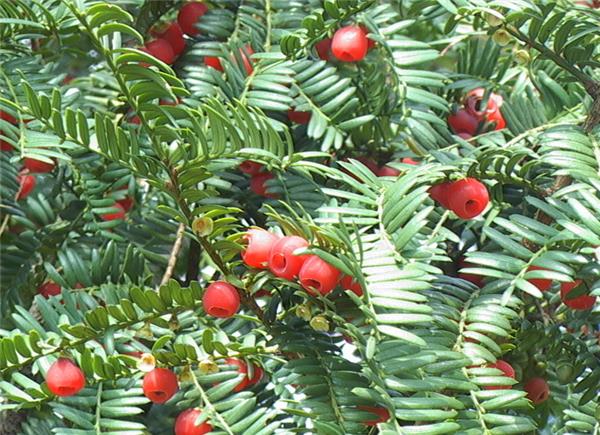What are the functions of yew?
Taxus mairei is a treasure in flower culture. it not only has the function of watching and purifying the environment, but also has the value of making medical supplies. How to raise such a good yew? what are the breeding methods of the yew? Although common yew is a kind of tree cultivated by lazy people, it is not so simple in the actual process of yew breeding, and there are still a lot of details to pay attention to. The following will give you a detailed answer to the role of yew culture in this article.

The function of Taxus mairei
Cancer prevention
Taxus can not only absorb carbon monoxide, nicotine, sulfur dioxide and other toxic substances, but also absorb formaldehyde, benzene, toluene, xylene and other carcinogens, purify the air, is the only cancer prevention tree species found in the world.
Purify the air
Taxus has a purification rate of 12% of indoor formaldehyde, and indoor placement of yew can also degrade benzene, toluene, xylene, sulfur dioxide, nitrogen dioxide, carbon monoxide and other harmful substances in the air. Effectively eliminate the "secondhand smoke" pollution caused by smoking to family members. To the newly decorated new house, the yew can also eliminate radon, formaldehyde and other harmful gases and radioactive elements, and maintain human health.
Release a lot of oxygen
Ordinary tree species only release oxygen during the day and carbon dioxide at night, while the yew can absorb carbon dioxide and release oxygen 24 hours a day, so experts call it a natural health product for the human respiratory system.
Anti-radiation
For urban white-collar workers, they face the computer all day and accept the harm of a large amount of radiation. At this time, putting a yew pot near the work place can effectively prevent radiation damage to the human body.
Lose weight
It has been found that an ingredient extracted from Taxus chinensis can quickly activate lipolysis enzymes, decompose deep fat in the body, digest and inhibit intestinal heat absorption, prevent the formation of lipids and protect fat deposition in the blood. The speed of weight loss is fast, and the weight loss effect is good.

Second, the culture of Taxus chinensis
1. Cuttage breeding. The factors affecting the survival rate of Taxus chinensis var. mairei mainly include tree age, temperature, humidity, concentration of chemical treatment, substrate, season, variety and other human factors. Taxus chinensis var. mairei is better for young branches in spring and hard branches in autumn. it is best to do shading in low shed when cutting, the survival rate can generally reach more than 70%, and the base should do careful rooting treatment when cutting. The humidity should be kept at 75% 85% intermittently at the beginning and avoid water loss caused by strong winds.
2. Seedling management. The first is the temperature adjustment after the yew cuttings. The ground temperature of the bed after cutting should be kept at about 18 ℃ 25 degrees Celsius, the temperature in the shed is about 22 ℃-28 degrees Celsius, and the soil moisture should be kept between 60% and 70%. During the seedling period, we need to observe the temperature and humidity in the plastic shed every day to check the plastic film. If there are water droplets in it, on the contrary, there is no water shortage. It is found that the yew needs to be watered immediately when the yew is short of water, and the plastic should be opened in time for ventilation when the temperature in the shed reaches 30 degrees.
3. Weeding and disease prevention. The weeding of the yew is usually carried out when the grass is just growing. If the weed is removed after the big root of the grass is strong, it will be accidentally pulled out together with the seedlings or cause wind leakage and lead to the death of the seedlings, so it is necessary to pull the grass early and weed frequently to avoid the loss of water and fertilizer. in the rainy season, the seedlings of Taxus chinensis are prone to rhizome rot, at this time, we need to spray and irrigate with 70% dimethopone 400 / 700 times. The seedlings are prone to leaf blight in dry and hot seasons, when 1% Bordeaux solution is sprayed with western medicine to control it.

3. Key points of potted Taxus mairei
Potted yew soil is the best in loam, and peat soil and perlite can also be mixed with loam to form a mixed substrate. Water conservation, fertilizer conservation and ventilation are beneficial to the growth of Taxus chinensis. Although clay preserves water and fertilizer, it is impervious to air, which is not conducive to the growth and development of Taxus chinensis root system. Although the sand is breathable, it is poor in fertilizer and water retention, which is not conducive to the growth of Taxus chinensis. The best light for yew is from 7 to 11 o'clock every morning, about 4 hours a day, shorter in summer and longer in autumn and spring. But the lack of light also affects the photosynthesis and growth of Taxus chinensis.

The above for the role of yew to do a detailed understanding, I hope to help you, so that your yew culture better, but also believe that you have a detailed understanding of the role of yew.
The above for the role of yew to do a detailed understanding, I hope to help you, so that your yew culture better, but also believe that you have a detailed understanding of the role of yew.
Related
- Wuhan Hospital Iron Tree Blooming Result Was Instantly Frightened by the Gardener Master
- Which variety of camellia is the most fragrant and best? Which one do you like best?
- What is the small blue coat, the breeding methods and matters needing attention of the succulent plant
- Dormancy time and maintenance management of succulent plants during dormancy
- Minas succulent how to raise, Minas succulent plant pictures
- What are the varieties of winter succulent plants
- How to raise succulent plants in twelve rolls? let's take a look at some experience of breeding twelve rolls.
- Attention should be paid to water control for succulent plants during dormant period (winter and summer)
- Watering experience of twelve rolls of succulent plants
- Techniques for fertilizing succulent plants. An article will let you know how to fertilize succulent plants.



